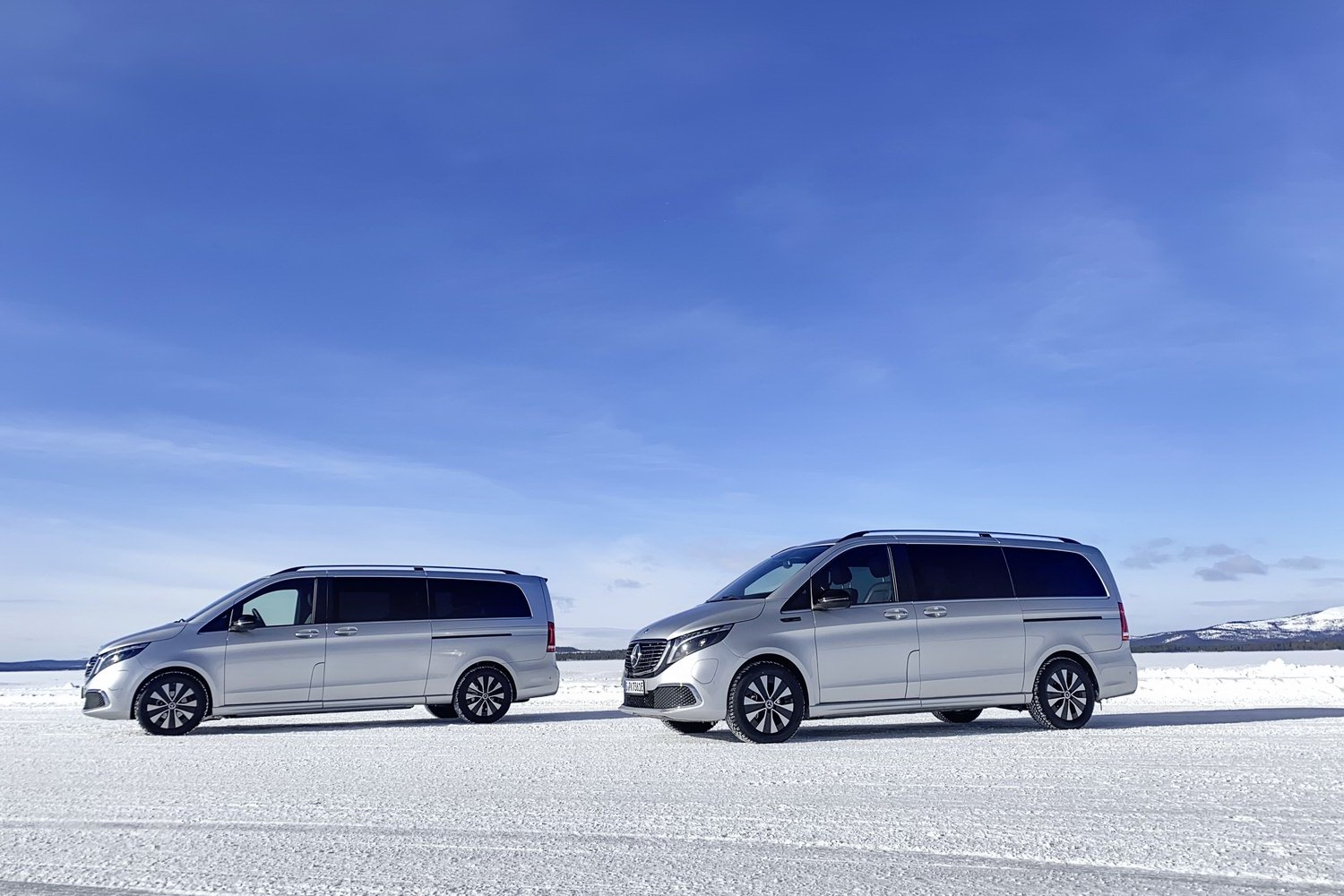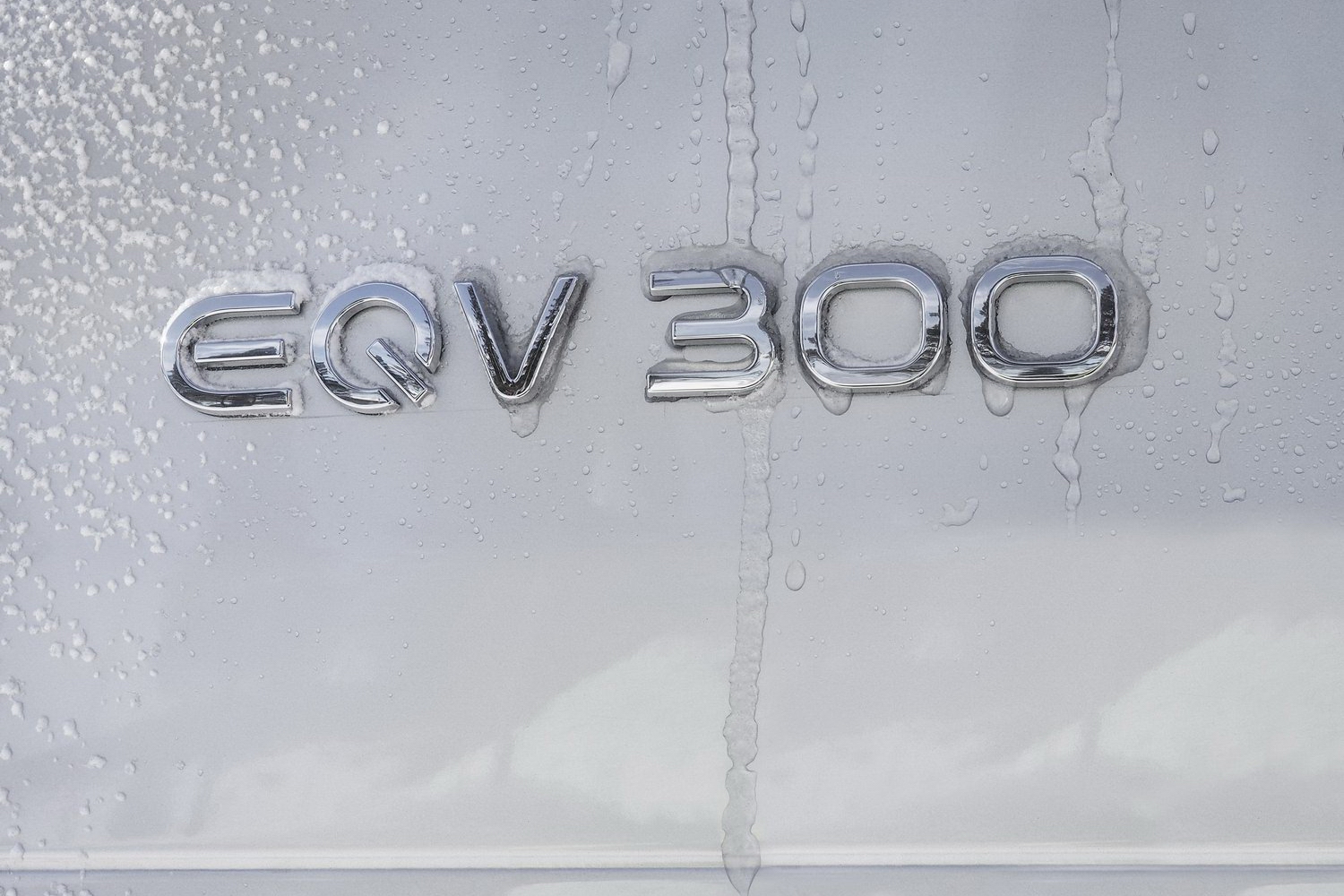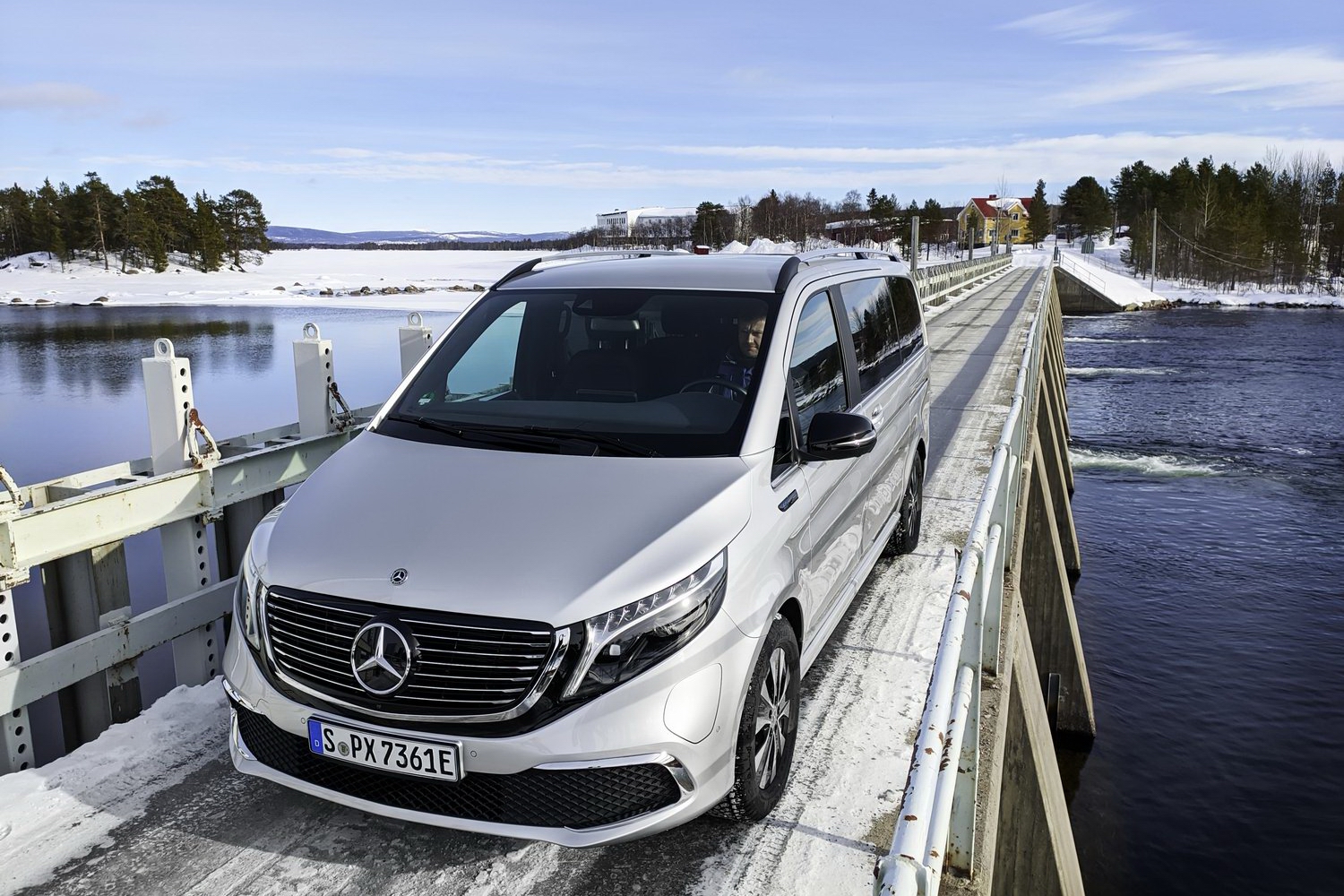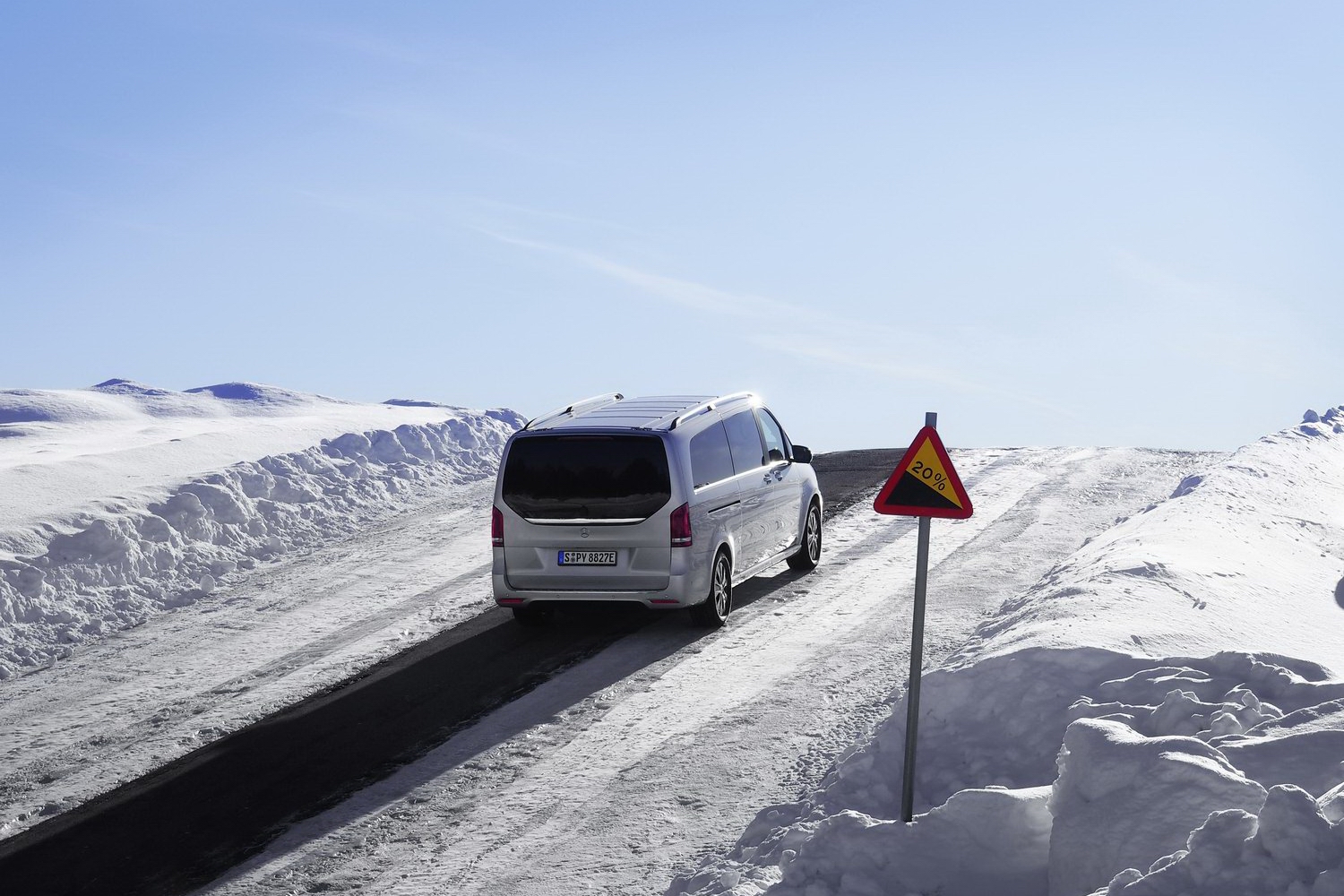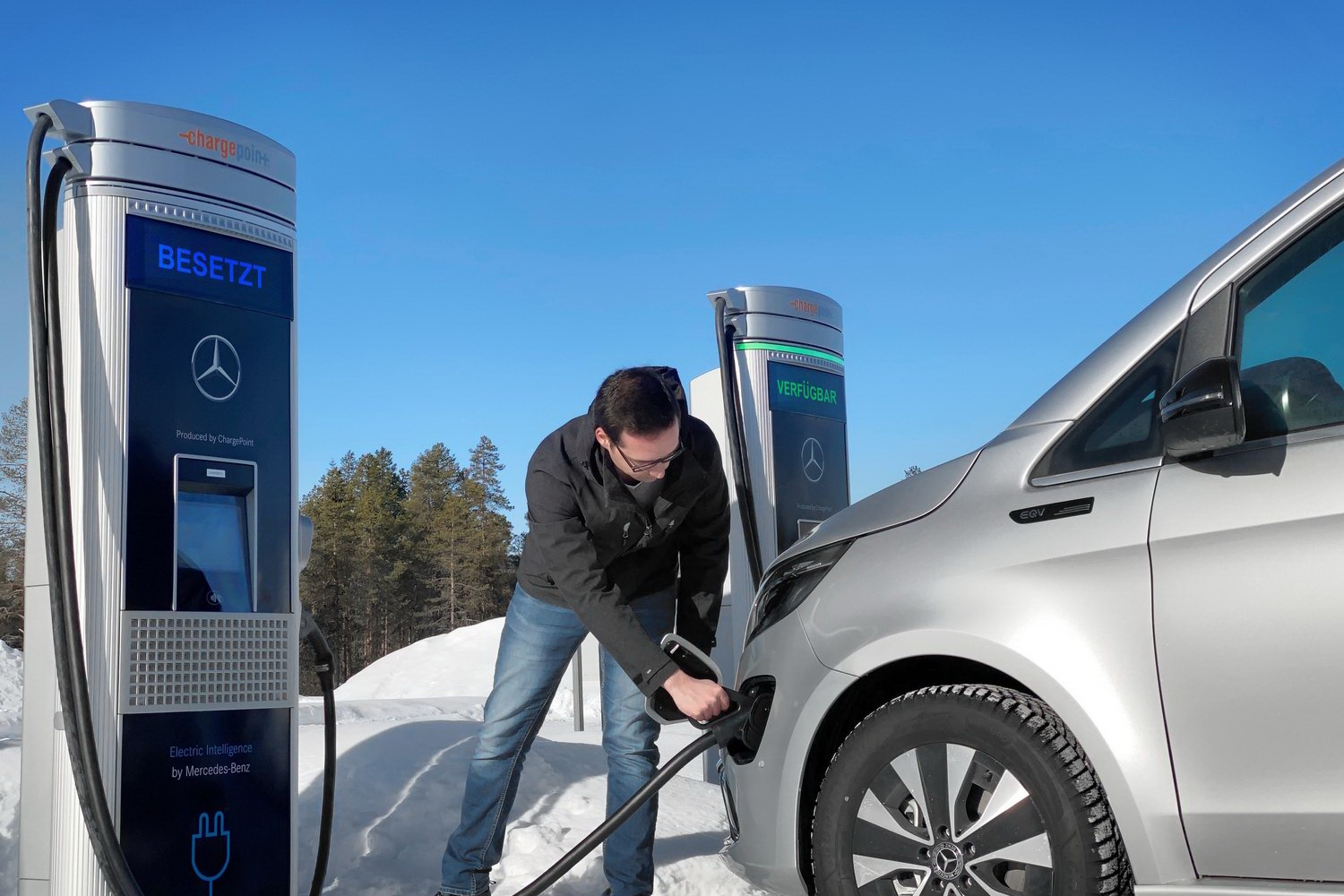Arjeplog in Sweden is about as far away as you can get from anything. You want social distancing? Well, assuming you can safely get to Arjeplog, it's about the best place to be right now. Nestled way up in the north-east of Sweden, cosying up to the Russian border (and not a million miles from the Russian nuclear submarine base of Murmansk) if you go to Arjeplog, you'll find not much more than a few hardy locals, some elk, and mile upon mile of snowy pine forest.
Through the winter, you'll also find plenty of car engineers. Even though new social distancing rules are being observed as much as possible, the testing and prototyping work that means car makers will have new products to launch when we can all emerge, mole-like, from our homes once again, carries on.
Mercedes has recently wrapped up testing its new EQV, which will be its first all-electric MPV. The German car maker spent several months earlier this year driving EQVs to almost-destruction amid the tundra and the reindeer, looking for the ridiculously cold weather to help reveal the gaps, cracks, and mishaps in the car's development. There's nothing like a temperature figure into double-digit minus territory to uncover any potential flaws in a new design, and the not-unreasonable assumption is that if it works here in Arjeplog, it'll easily work in more temperate climes, as well as being fit for purpose in chillier markets such as the mid-west of America, Russia, and the more vertical parts of Europe.
It's especially important to test the EQV up here. It's tempting to look at the silhouette of the EQV, which is basically identical to that of the existing diesel-engined V-Class MPV and the Viano panel van, and assume that Mercedes has simply crowbarred out the combustion engine, and bunged in some batteries and a motor. Ah, would that t'were so simple...
Actually, not only does an electric variant of an existing car need, arguably, even more exacting testing (because it already has a physically identical benchmark to meet) but in cold-weather performance terms, it's even more vital. After all, chilly temperatures are no friend of the battery.
The EQV test vehicles were thus put through numerous complex tests on the Arctic test site. More than 30 engineers, electronics experts and mechanics from Mercedes-Benz Vans were involved: for example, they drove over frozen lakes and measured the effects of extreme cold on handling, ergonomics and comfort, using specialised measuring technology. The starting behaviour and low-temperature resistance of the drive components, software and interfaces, and the thermo-management of the entire vehicle, were tested in cold cell facilities.
A further important element of the test was, of course, charging behaviour. The EQV is equipped with an integrated fast-charging function with which it can recharge from ten per cent to around 80 percent of its energy in 45 minutes from a rapid charger. That's handy, and what we expect from our electric cars these days, but it must function reliably regardless of the temperature.
"In this final winter test, we demanded everything of the EQV - and it performed very well. We used these extensive tests for the last milestones on the way to market readiness", said Benjamin Kaehler, head of electric power at Mercedes-Benz Vans. "Particularly with regard to thermal management, so important to electric vans, we were able to gain insights which will make the EQV safer and more comfortable."
What insights were they? Well, Mercedes is being understandably schtum for now, but they did tell CompleteCar that the lower centre of gravity, thanks to the hefty battery pack being mounted under the floor, helped to tidy up the slippery-surface handling of the EQV. The car's pre-heating system, which warms up the cabin while it's charging overnight, helped to make the inside more comfortable, and the outside more visible, when getting going on a frozen morning.
This kind of heavy-duty Arctic testing is critical to making sure that EV car batteries can still be useable in harsh weather conditions. That's especially true in light of recent data from the American Automobile Association (AAA). The AAA's findings show that if the thermometer falls to as low as -6 degrees celsius, then as much as 41 per cent of an EV's range can be wiped out.
Conversely, driving range can also be affected by very high temperatures. If the ambient gets above 35 degrees celsius, you can wave bye-bye to around 17 per cent of your total driving range. Some of the reduction in range is to do with the way the chemistry of the battery pack changes with temperature, while some is down to the increased use of in-car heaters or air conditioning when driving in such conditions.
"The appeal of electric vehicles continues to grow since a greater variety of designs and options with increased range have come onto the market," said Greg Brannon, AAA's director of automotive engineering and industry relations. "As long as drivers understand that there are limitations when operating electric vehicles in more extreme climates, they are less likely to be caught off guard by an unexpected drop in driving range."
The AAA's tests were carried out on a rolling road in a 'climate cell' testing chamber, designed to mimc the effects of extreme temperatures. The warning doesn't just encompass the annoyance of having to stop more frequently to charge - the AAA also pointed out that extreme temperatures can add as much as USD$25 to the cost of travelling 1,000 miles in extra charging costs.
"The research clearly shows that electric vehicles thrive in more moderate climates, except the reality is most Americans live in an area where temperature fluctuates," said Megan McKernan, manager of automotive research centre. "Automakers are continually making advances to improve range, but with this information, drivers will be more aware of the impacts varying weather conditions can have on their electric vehicles."
AAA tested the BMW i3s, Chevrolet Bolt and Nissan Leaf from the 2018 model year, and the 2017 Tesla Model S 75D and Volkswagen e-Golf. Tesla responded to the AAA's warnings by saying that: "The average Model S customer doesn't experience anywhere near that decrease in range." The California-based electric car maker said that it sees a range decrease of around one per cent in very hot weather, but it did not further discuss its cold weather figures.

